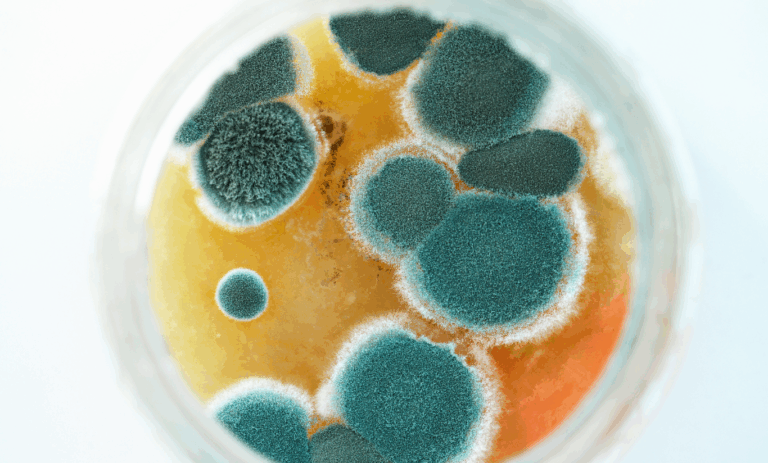At ViveWell Health, tackling the root causes of chronic conditions is our passion, empowering you to thrive. Mold and its toxic byproducts, mycotoxins, are silent disruptors of hormonal balance and cardiovascular health. Through extensive mycotoxin testing, we routinely witness these connections and remain committed to providing innovative solutions. This article blends research-based insights with actionable advice, explaining why targeted treatments at ViveWell Health are crucial to liberate you from these hidden threats. Let’s dive in and empower your health journey.
The Science of Mold and Mycotoxins
Mold thrives in damp environments, releasing mycotoxins that can infiltrate your body through air or food. These toxins trigger oxidative stress by generating reactive oxygen species (ROS), overwhelming antioxidants like glutathione and superoxide dismutase, and leading to cellular damage. At ViveWell Health, our routine mycotoxin assessments reveal how prevalent this issue is, frequently linking it to unexplained symptoms in our patient community.
Hormonal Disruption Unveiled
Hormones such as testosterone, estrogen, cortisol, and growth hormone (GH) are crucial for metabolism, reproduction, and stress response. Mycotoxins disrupt these systems by inducing lipid peroxidation and mitochondrial dysfunction, throwing hormonal signaling off balance. This can manifest as fatigue, mood swings, or reproductive challenges. At ViveWell Health, observations among our patients reveal how mycotoxins suppress GH via inflammation while elevating cortisol, causing a cascade of metabolic issues that we address with personalized care.
Cardiovascular Risks Amplified
Your cardiovascular health is closely tied to environmental exposures, with mycotoxins playing a significant role. These toxins promote atherosclerosis by causing lipid peroxidation, damaging endothelial cells, and increasing markers like malondialdehyde (MDA), which fosters plaque buildup. Many of you may recall our previous blog on apolipoprotein B (ApoB) and lipoprotein(a) [Lp(a)], both key indicators of heart disease risk. Mycotoxins exacerbate these risks by disrupting lipid metabolism, elevating ApoB and Lp(a) levels, and driving inflammation that weakens arteries. Through routine testing, ViveWell Health uncovers these patterns, guiding effective, patient-centered interventions.
The Evidence Behind the Impact
Research shows that mycotoxins generate ROS, deplete antioxidants, and damage DNA, proteins, and lipids. This oxidative burden disrupts hormone synthesis and cardiovascular integrity, amplified by co-exposures like heavy metals. Our patient data at ViveWell Health supports these findings, and we have observed that targeted therapies can reverse related health declines.
Why Advanced Testing is Crucial
Many ViveWell Health patients opt for advanced mycotoxin testing, which reveals the deep connection between environmental toxins and chronic health issues. Rather than relying on generic detox plans, visiting our clinic ensures a comprehensive evaluation of mycotoxins, environmental toxins, and heavy metals, uncovering the full toxic burden for the most effective treatment.
ViveWell Health’s Treatment Approach
Our protocols target mycotoxins and their effects with science-backed strategies:
- Gut Detox Protocols: Our downloadable gut detox protocols, including activated charcoal and select probiotics, bind toxins in the gut, reducing reabsorption and supporting detoxification.
- Ozone Major Autohemotherapy and EBOO: Advanced therapies like ozone therapy and EBOO help oxygenate blood, reduce oxidative stress, and remove deeper toxins to improve circulation and cellular health.
- Antioxidant and Liver Support: Our Morning Shake, a nutrient-dense blend, supports cellular repair and energy. It includes Thorne MediClear (2 scoops), Perfect Amino (1–2 scoops), vitamin C (2g), cod liver oil or omega-3s (2g), and Mito Detox III (2 capsules)—all shown to boost glutathione, enhance liver function, and neutralize toxins.
This comprehensive, multi-faceted approach restores hormonal balance and cardiovascular health, aligning perfectly with ViveWell Health’s mission to optimize your well-being.
Follow-Up and Optimization
Recovery is ongoing. At ViveWell Health, we schedule follow-up evaluations every 4–6 weeks to monitor progress and adjust protocols. Our patients with similar toxin profiles consistently demonstrate reduced oxidative markers and improved vitality, affirming our tailored care’s value.
Take Action with ViveWell Health
Don’t let mold and mycotoxins undermine your hormones and heart. Act now! Download our free gut detox mycotoxin protocol or purchase the premium version to start your journey. For a comprehensive solution, visit us at 12001 West 63rd Place, Suite 201, Arvada, CO, or call us for personalized testing and treatment of mycotoxins, environmental toxins, and heavy metals. Our team is ready to guide you to vibrant health, take the first step today!
Disclaimer: This content is for informational purposes only and not medical advice. Consult your healthcare provider before making any changes.
References:
- Smith, J. E., Solomons, G. L., Lewis, C. W., & Anderson, J. G. (1994). Mycotoxins and human health. Food Technology, 48(6), 126-130.
- Bennett, J. W., & Klich, M. (2003). Mycotoxins. Clinical Microbiology Reviews, 16(3), 497-516. https://doi.org/10.1128/cmr.16.3.497-516.2003
- Kuiper-Goodman, T. (1996). Risk assessment of mycotoxins. Food Additives and Contaminants, 13(1), 1-9. https://doi.org/10.1080/02652039609373861
- Peraica, M., Radic, B., Lucic, A., & Pavlovic, M. (1999). Toxic effects of mycotoxins in humans. Bulletin of the World Health Organization, 77(9), 754-766. https://www.ncbi.nlm.nih.gov/pmc/articles/PMC2557735/
- Pestka, J. J. (2010). Deoxynivalenol: Mechanisms of action, human exposure, and toxicological relevance. Toxicology Letters, 119(1), 1-10. https://doi.org/10.1016/S0378-4274(00)00200-8
- Marasas, W. F., Miller, J. D., Riley, R. T., & Visconti, A. (2004). Mycotoxins in food and feed. Journal of Food Protection, 67(10), 2319-2332. https://doi.org/10.4315/0362-028X-67.10.2319
- Wild, C. P., & Gong, Y. Y. (2010). Mycotoxins and human disease: A largely ignored global health issue. Annual Review of Nutrition, 30, 281-310. https://doi.org/10.1146/annurev.nutr.012809.104751
- Avantaggiato, G., Havenaar, R., & Visconti, A. (2004). Detoxification of mycotoxins. Food Additives and Contaminants, 21(4), 410-416. https://doi.org/10.1080/02652030410001689687
- Bocci, V. (2005). Ozone as a bioregulatory agent. Journal of Biological Regulators and Homeostatic Agents, 19(3-4), 181-192. https://pubmed.ncbi.nlm.nih.gov/9250885/
- Jones, D. P. (2008). Radical-free biology of oxidative stress. American Journal of Physiology. Cell Physiology, 295(4), C849–C868. https://doi.org/10.1152/ajpcell.00283.2008
- Turner, P. C., Flannery, B., Isitt, C., Ali, M., & Pestka, J. (2009). The role of mycotoxin exposure in health outcomes: A review. Environmental Health Perspectives, 117(11), 1803-1809. https://doi.org/10.1289/ehp.0901229






